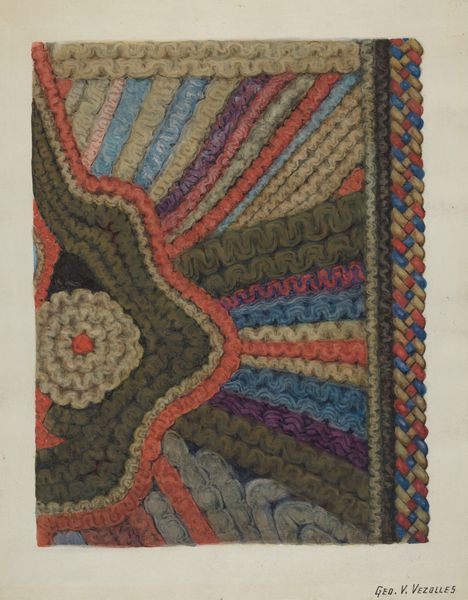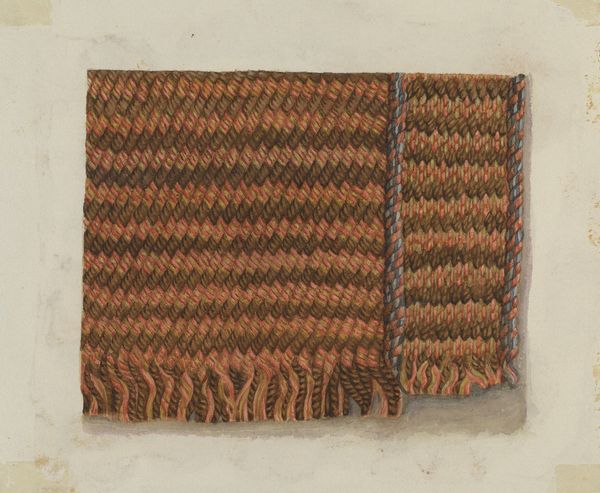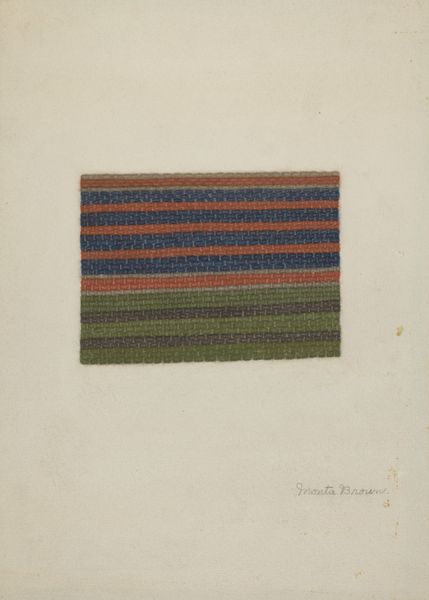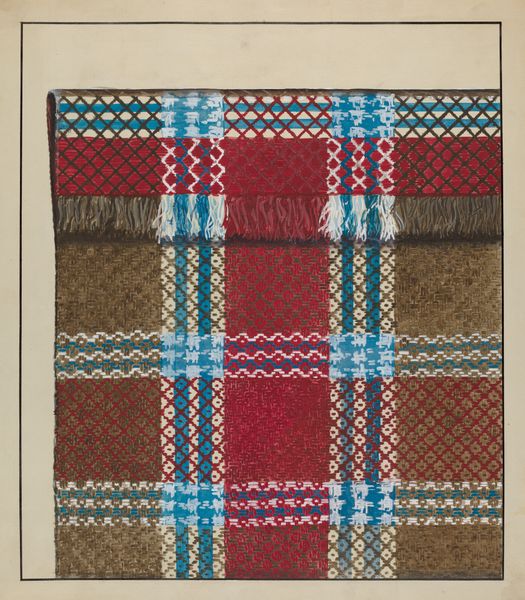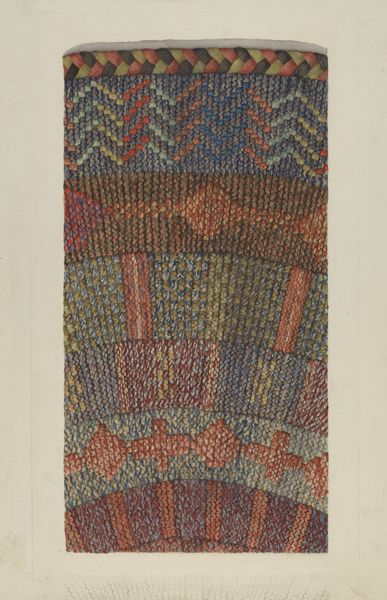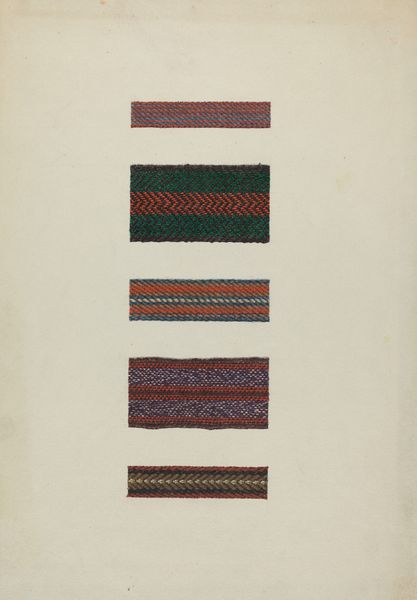
drawing, fibre-art, textile
#
drawing
#
fibre-art
#
textile
#
geometric
#
abstraction
Dimensions: overall: 24.6 x 9 cm (9 11/16 x 3 9/16 in.)
Copyright: National Gallery of Art: CC0 1.0
Editor: This is a drawing of a Shaker Rug from 1941. It appears to be a fibre art study, a textile detail of some kind. The repeated bands of color create a sense of rhythm. What do you see in this piece from a formalist point of view? Curator: The immediate impression is of structure and repetition. We have horizontal bands of varying widths and colors – primarily blue, rust and green. Observe the careful alternation of hue and the tactile quality achieved through the drawing's simulation of woven texture. How does this arrangement influence your understanding of the piece? Editor: I see a defined composition and color that provides it stability, however the wavy delineation between the horizontal colored segments gives it an impression of imbalance, that everything might not be as even or precise as initially believed. It could indicate an initial intent that shifted towards an approximation. Curator: Indeed. Note also the drawing medium itself. It exists as a relatively flat rendering of a 3D object, a rug. The semiotics are rich. The choice to depict woven fibre with drawn lines is an interesting abstraction, a translation. Editor: That's fascinating! So, by analyzing the composition, we're actually seeing layers of meaning—the rug itself, the artist's representation, and the drawing's own materiality, that altogether influence our interpretation. Curator: Precisely. It's a network of visual elements—color, line, form—that ultimately coalesce to inform meaning and effect, to influence a comprehensive perception. Editor: I hadn't considered it that deeply, but this way of deconstructing a piece through its components clarifies how meaning emerges from construction. Thank you. Curator: My pleasure. Such analyses bring clarity to artworks by discovering that there's no pretense to decode but to reveal an aesthetic object.
Comments
No comments
Be the first to comment and join the conversation on the ultimate creative platform.

